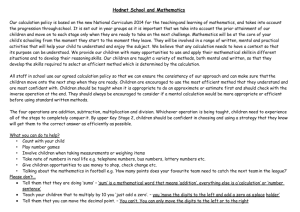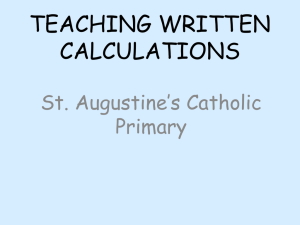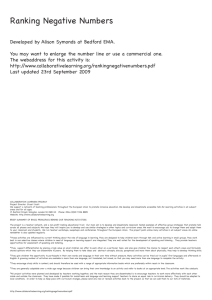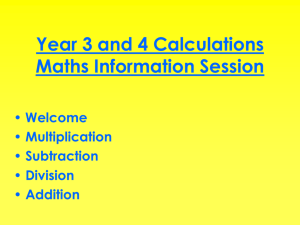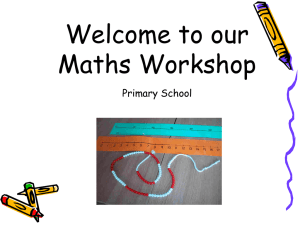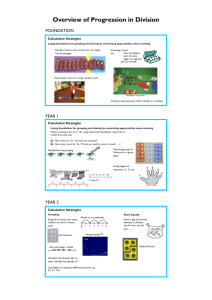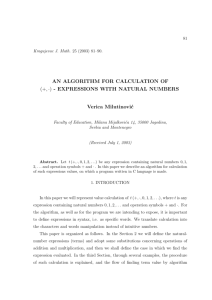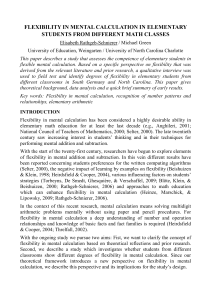LESSON PLAN
advertisement
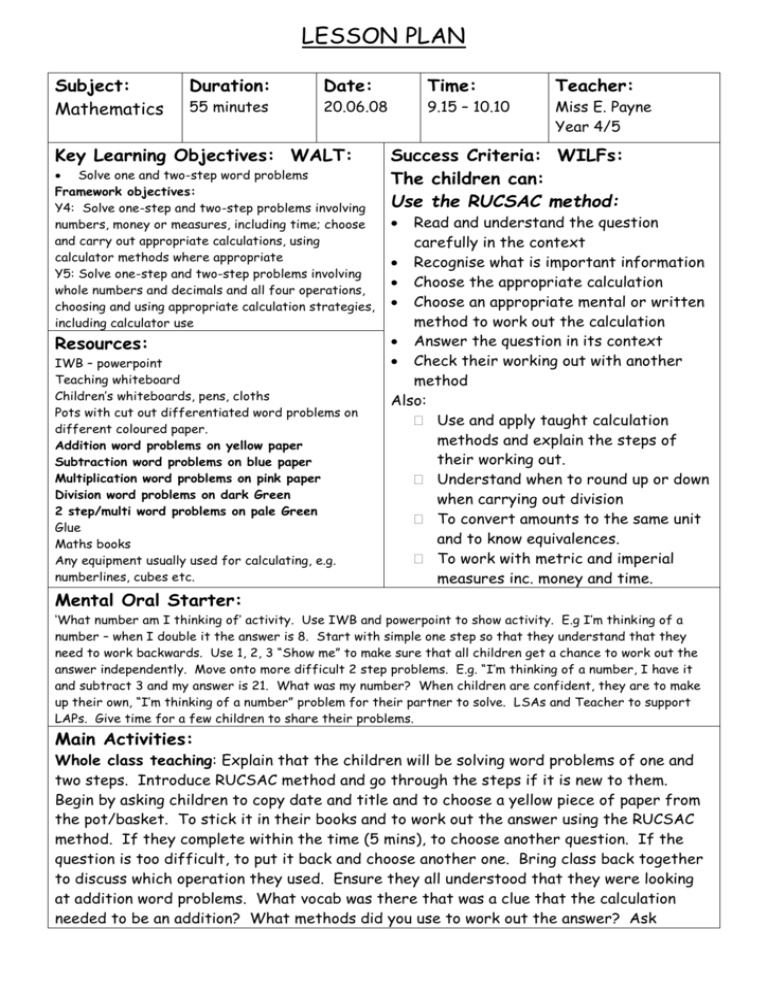
LESSON PLAN Subject: Mathematics Duration: Date: Time: Teacher: 55 minutes 20.06.08 9.15 – 10.10 Miss E. Payne Year 4/5 Key Learning Objectives: WALT: Solve one and two-step word problems Framework objectives: Y4: Solve one-step and two-step problems involving numbers, money or measures, including time; choose and carry out appropriate calculations, using calculator methods where appropriate Y5: Solve one-step and two-step problems involving whole numbers and decimals and all four operations, choosing and using appropriate calculation strategies, including calculator use Resources: IWB – powerpoint Teaching whiteboard Children’s whiteboards, pens, cloths Pots with cut out differentiated word problems on different coloured paper. Addition word problems on yellow paper Subtraction word problems on blue paper Multiplication word problems on pink paper Division word problems on dark Green 2 step/multi word problems on pale Green Glue Maths books Any equipment usually used for calculating, e.g. numberlines, cubes etc. Success Criteria: WILFs: The children can: Use the RUCSAC method: Read and understand the question carefully in the context Recognise what is important information Choose the appropriate calculation Choose an appropriate mental or written method to work out the calculation Answer the question in its context Check their working out with another method Also: Use and apply taught calculation methods and explain the steps of their working out. Understand when to round up or down when carrying out division To convert amounts to the same unit and to know equivalences. To work with metric and imperial measures inc. money and time. Mental Oral Starter: ‘What number am I thinking of’ activity. Use IWB and powerpoint to show activity. E.g I’m thinking of a number – when I double it the answer is 8. Start with simple one step so that they understand that they need to work backwards. Use 1, 2, 3 “Show me” to make sure that all children get a chance to work out the answer independently. Move onto more difficult 2 step problems. E.g. “I’m thinking of a number, I have it and subtract 3 and my answer is 21. What was my number? When children are confident, they are to make up their own, “I’m thinking of a number” problem for their partner to solve. LSAs and Teacher to support LAPs. Give time for a few children to share their problems. Main Activities: Whole class teaching: Explain that the children will be solving word problems of one and two steps. Introduce RUCSAC method and go through the steps if it is new to them. Begin by asking children to copy date and title and to choose a yellow piece of paper from the pot/basket. To stick it in their books and to work out the answer using the RUCSAC method. If they complete within the time (5 mins), to choose another question. If the question is too difficult, to put it back and choose another one. Bring class back together to discuss which operation they used. Ensure they all understood that they were looking at addition word problems. What vocab was there that was a clue that the calculation needed to be an addition? What methods did you use to work out the answer? Ask children to explain their methods, e.g. partitioning. Did you need to know any facts in order to work out the question? Was there anything tricky or difficult about the question? Repeat this process for subtraction (BLUE), Multiplication (PINK), Division (GREEN) and 2 step/multi (light GREEN). For subtraction discuss methods e.g. numberline; for multiplication discuss methods e.g. grid method and for division discuss methods e.g. chunking and super chunking. Also reinforce idea of rounding up or down after division to answer the question. “Did anybody need to round up or down after dividing in order to answer the question?” For two step and multi step word problems discuss which part they needed to do first and see if HAPs are able to represent the steps of the calculations using brackets correctly. Plenary: Mini plenaries throughout the lesson. At the very end of the lesson, return to the WILFs on the whiteboard and ask the children to complete a WILF grid to stick in to show how confident they are that they have met each success criteria. Ask groups to come and stick any questions that they could not answer onto the whiteboard to look at in a future lesson. Key Vocabulary: Word problem, calculation, addition, subtraction, multiplication, division, chunking, grid method, numberline, round up/down, percentage, decimal, fraction, measures, pound, pence, context, real life SEN: Taken out of class for alternative work. LSAs to support 2B – 3C children

